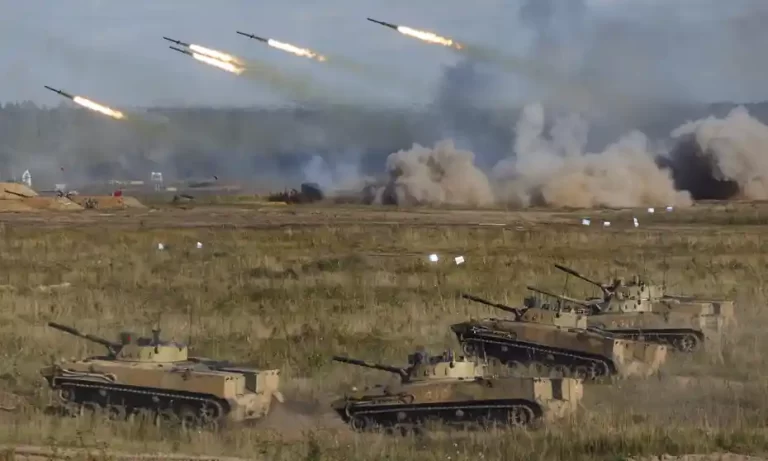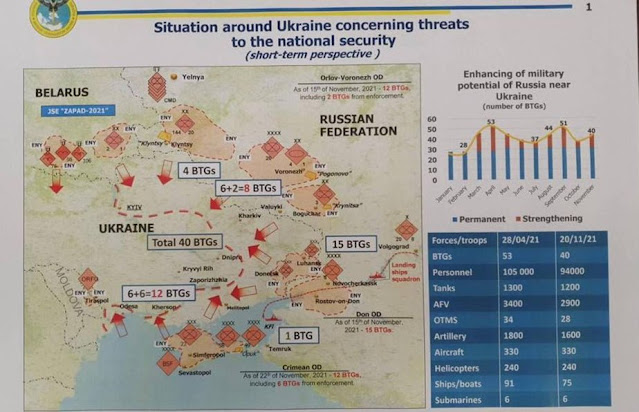The risks of further escalation around Ukraine are rising against the backdrop of the movement of Russian troops into Belarus. The Alexander Lukashenko regime has ultimately lost its independence and is being exploited by the Kremlin to run intelligence and subversive operations against NATO and the bloc’s partners.
There is a 40% chance of nuclear strike systems being deployed in Belarus. During the Soviet period, the 49th missile division used to be stationed in the city of Lida. However, at that time, Poland, the Czech Republic, and East Germany were part of the Warsaw Pact Organization. At present, such deployment of Russian nuclear arms in Belarus in close proximity to NATO’s eastern flank poses the risk of their destruction by conventional weapons. Moscow believes that the decision will depend on whether the NATO’s nuclear missiles will be transferred from Germany to Poland. The scenario being unlikely, the Kremlin is expected to refrain from the move.
At the same time, joint exercises between Russia and Belarus can be used as a springboard for a military incursion into Ukraine.
On February 10-20, Belarus will be hosting the joint Allied Resolve 2022 military exercise with Russia. After its completion, preparations will begin for the new Union Shield 2023 drill, held in Russia. Such massive maneuvers allow the Kremlin to mask the movement of troops and swiftly form rapid strike groupings in different directions.
Belarusian regular army shouldn’t be seen as a real threat to NATO due to the low morale and unreliability of conscripts to participate in such massive military campaigns. Therefore it’s only Russian forces stationed in Belarus that can pose such threat.
The deployment of forces in Belarus allows the Kremlin to “stretch” a potential front line along the entire border of Ukraine, with the exception of western regions, which makes the success of a potential invasion more likely.
According to a U.S. State Department official, the said exercises are being held in Belarus after Russia built up forces near its borders amid the latest engineered migration crisis. Exploiting the crisis, the Russian media has been actively convincing audiences in Belarus that the West is up for unleashing a war against their country. Thus, the Kremlin purposefully conveys misinformation to the Lukashenko regime on the potential “attack” on Belarus.
In turn, Minsk believes Moscow’s spins, which is confirmed by Lukashenko’s latest statement claiming the exercises are aimed at working out a certain joint action plan in case of contingencies involving the Baltic states, Poland, and Ukraine. Thus, the fact that Minsk is now seeing Kyiv as a potential threat increases the likelihood of Russia using the Belarusian territory to invade Ukraine.
According to our estimates, the Kremlin is waiting out to seize the right opportunity that would allow creating a pretext for a military incursion into Ukraine. It appears Moscow hasn’t yet decided on a specific date for invading its neighbor, although the move as such has a backing in Vladimir Putin’s entourage. However, Moscow may continue to exert psychological pressure in order to cause general public fatigue and persuade Kyiv to implement a plan to settle the Donbas crisis in a shape favorable to the Kremlin, which Kyiv has been vehemently opposing.
For Ukraine, the risks will increase significantly if the Kremlin implements the proposals voiced in the Russian parliament for the formal recognition of the puppet “LPR” and “DPR.” In this case, Moscow would be able to integrate the “republics” into the Collective Security Treaty Organization (CSTO) only to further invade Ukraine under the CSTO mandate, which has already been worked out in Kazakhstan.





